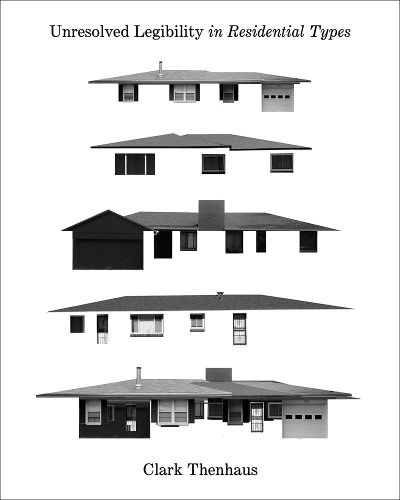Readings Newsletter
Become a Readings Member to make your shopping experience even easier.
Sign in or sign up for free!
You’re not far away from qualifying for FREE standard shipping within Australia
You’ve qualified for FREE standard shipping within Australia
The cart is loading…






Architectural legibility requires both visual clarity of a building’s appearance such that its formal, spatial, and material compositions can be comprehended, as well as a certain clarity of its social, cultural, and political histories. While the term legibility carries a connotation of conclusiveness or objective qualifications, legibility in architecture is most often inconclusive and unresolved. Such unresolved legibility is particularly visible in houses, which are the source of inquiry in this project. This book proposes new understandings and interpretations of American residential architecture by investigating and graphically illustrating the forms, spaces, and histories of ten residential types.
Perhaps no genre of architecture has been written about more than ‘the house’. As long-standing subjects of architectural discourse, cultural reflection, and experimentation, houses represent a confluence of architectural and broader cultural phenomena. The house is not only susceptible to, but in fact requires renewal and re-imagination; as an architectural type it reflects shifting societal values and the constant reconstruction of meaning that this shifting entails. Such social, cultural, political and contextual circumstances can best be evaluated under the rubric of legibility. While this might at first seem like an objective undertaking, legibility in architecture is indeterminate and unresolved, revealing the intertwining of architectural expressions with broader cultural circumstances.
$9.00 standard shipping within Australia
FREE standard shipping within Australia for orders over $100.00
Express & International shipping calculated at checkout
Architectural legibility requires both visual clarity of a building’s appearance such that its formal, spatial, and material compositions can be comprehended, as well as a certain clarity of its social, cultural, and political histories. While the term legibility carries a connotation of conclusiveness or objective qualifications, legibility in architecture is most often inconclusive and unresolved. Such unresolved legibility is particularly visible in houses, which are the source of inquiry in this project. This book proposes new understandings and interpretations of American residential architecture by investigating and graphically illustrating the forms, spaces, and histories of ten residential types.
Perhaps no genre of architecture has been written about more than ‘the house’. As long-standing subjects of architectural discourse, cultural reflection, and experimentation, houses represent a confluence of architectural and broader cultural phenomena. The house is not only susceptible to, but in fact requires renewal and re-imagination; as an architectural type it reflects shifting societal values and the constant reconstruction of meaning that this shifting entails. Such social, cultural, political and contextual circumstances can best be evaluated under the rubric of legibility. While this might at first seem like an objective undertaking, legibility in architecture is indeterminate and unresolved, revealing the intertwining of architectural expressions with broader cultural circumstances.